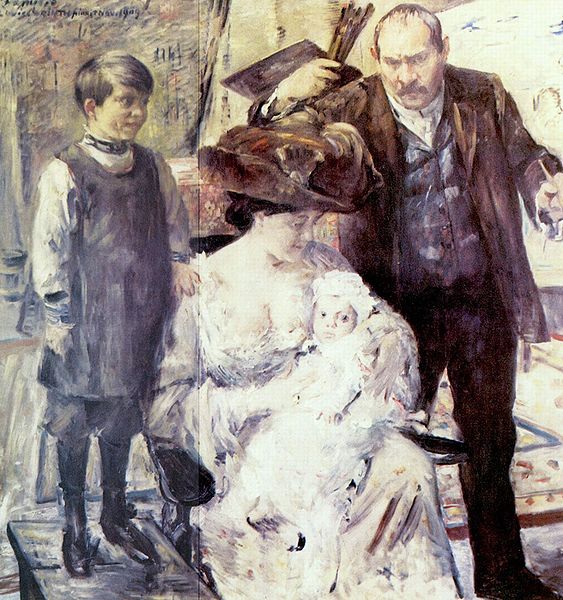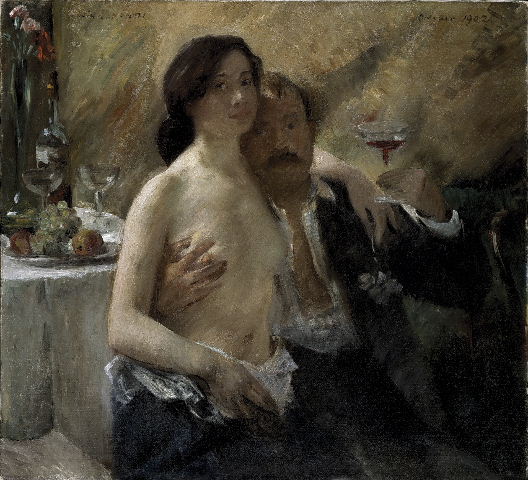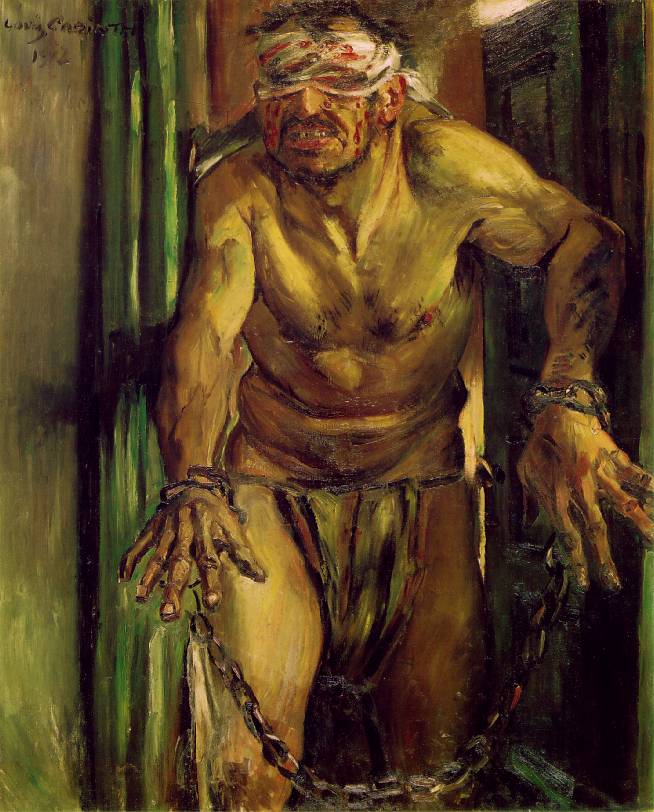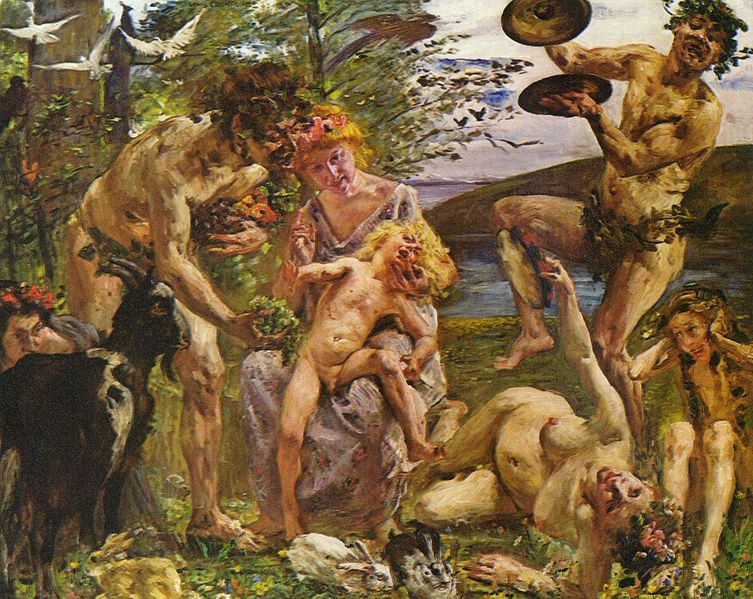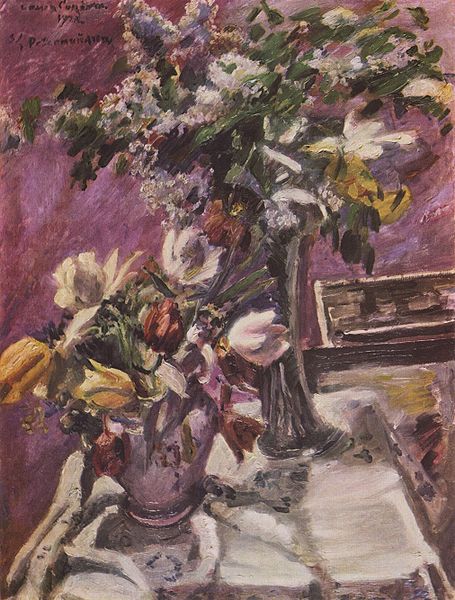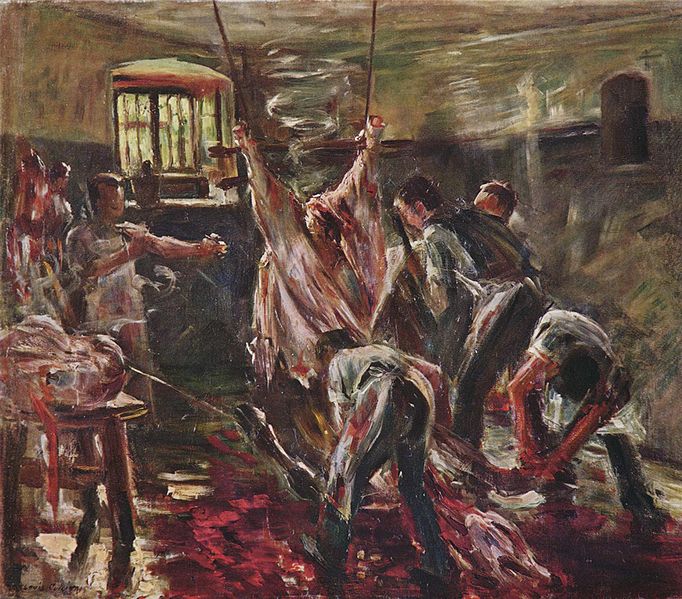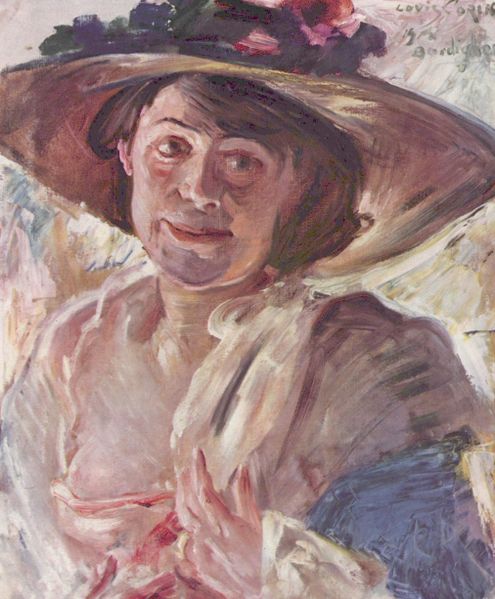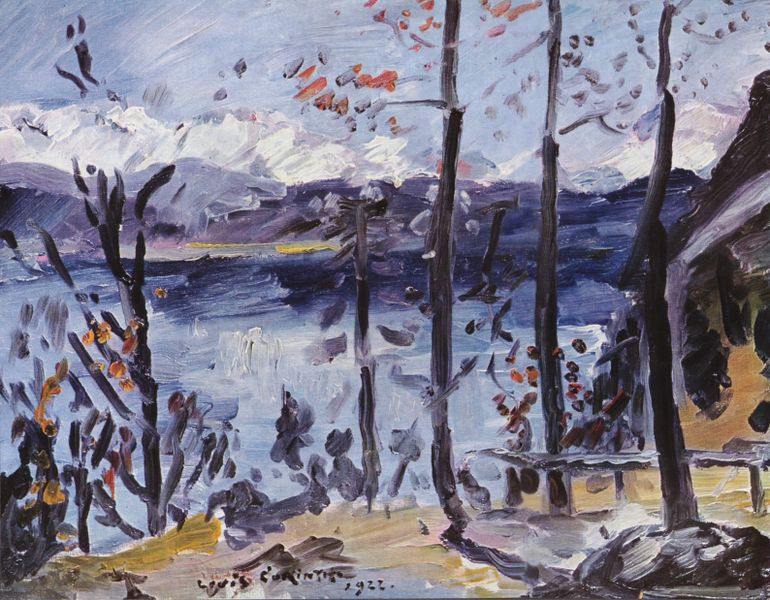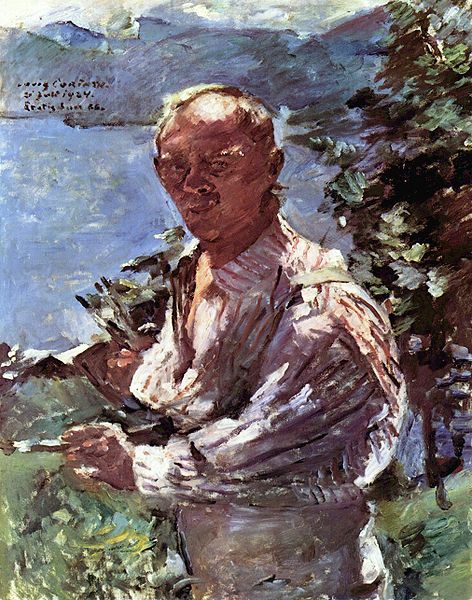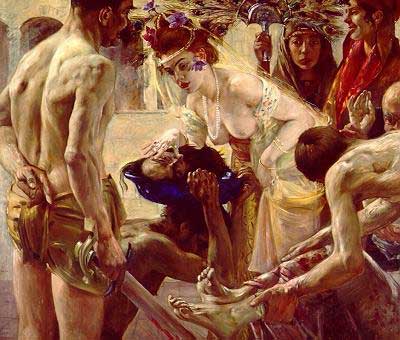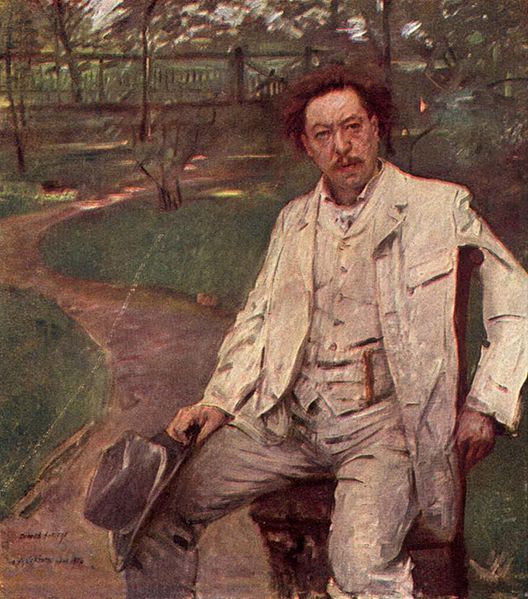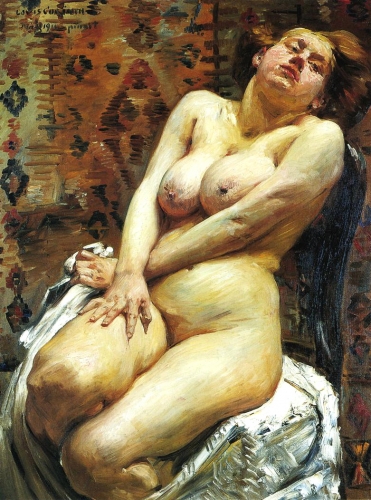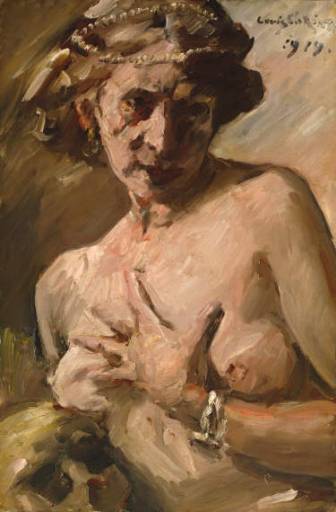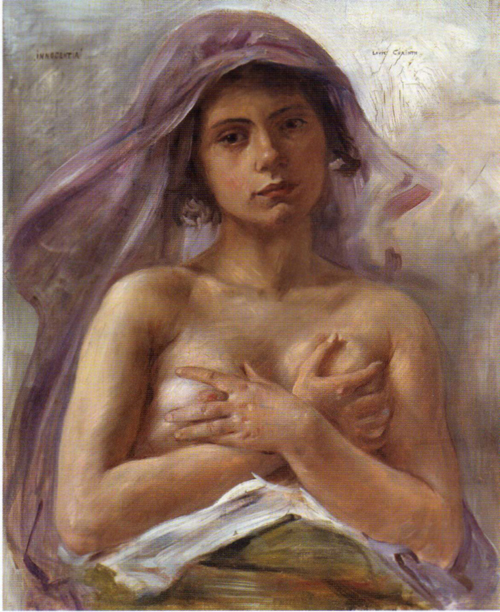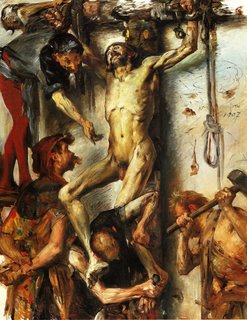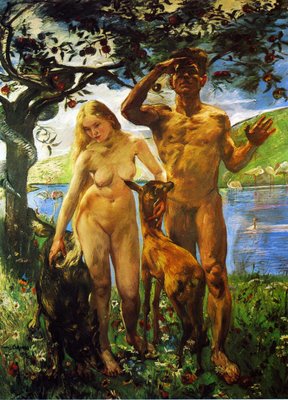<Back to Index>
- Chemist Henri Victor Regnault, 1810
- Painter Lovis Corinth, 1858
- 1st Minister of War of Czechoslovakia Milan Rastislav Štefánik, 1880
PAGE SPONSOR
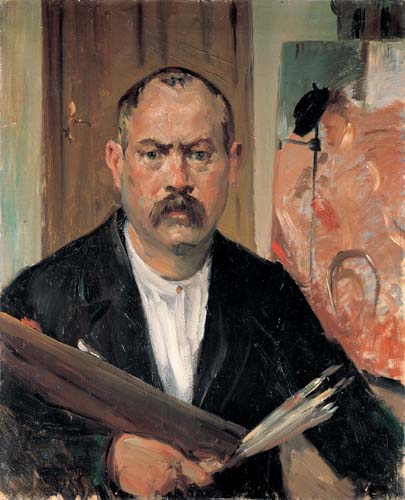
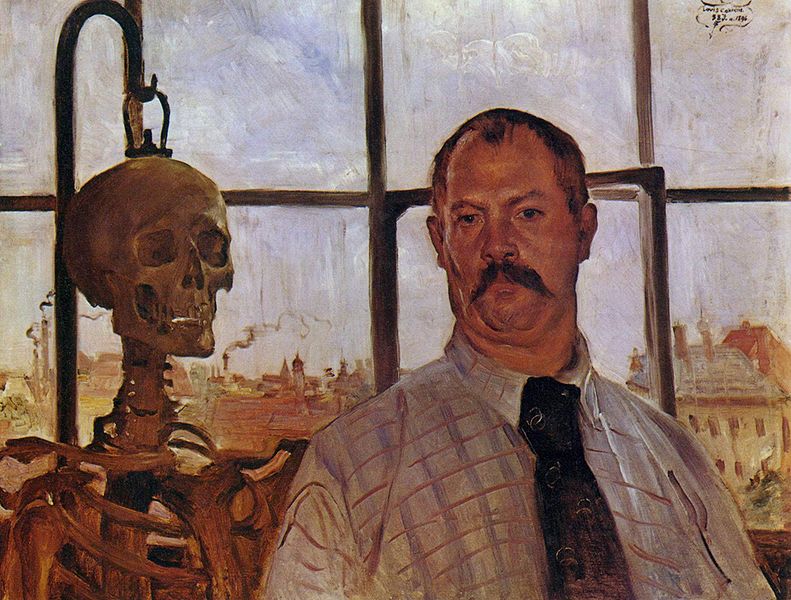
Lovis Corinth (21 July 1858 – 17 July 1925) was a German painter and printmaker whose mature work realized a synthesis of impressionism and expressionism.
Corinth studied in Paris and Munich, joined the Berlin Secession group, later succeeding Max Liebermann as
the group's president. His early work was naturalistic in approach.
Corinth was initially antagonistic towards the expressionist movement,
but after a stroke in 1911 his style loosened and took on many
expressionistic qualities. His use of color became more vibrant, and he
created portraits and landscapes of extraordinary vitality and power. Corinth's subject matter also included nudes and biblical scenes. Corinth was born in Tapiau (Gvardeysk), Province of Prussia, Kingdom of Prussia. Showing an early talent for drawing, he attended the Academy of Fine Arts Munich in 1880, which rivaled Paris as the avant-garde art center in Europe at the time. There he was influenced by Courbet and the Barbizon school, through their interpretation by the Munich artists Wilhelm Leibl and Wilhelm Trübner. Corinth then traveled to Paris where he studied under William-Adolphe Bouguereau at the Académie Julian. In 1891, Corinth returned to Munich, but in 1892 he abandoned the Munich Academy and joined the first Sezession.
In 1894 he joined the Free Association, and in 1899 he participated in
an exhibition organized by the Berlin Secession. These nine years in
Munich were not his most productive, and he was perhaps better known
for his ability to drink large amounts of red wine and champagne. Corinth moved to Berlin in 1900, and had a one-man exhibition at a gallery owned by Paul Cassirer. In 1902 at the age of 43, he opened a school of painting for women and married his first student, Charlotte Berend, some 20 years his junior. Charlotte was his youthful muse,
his spiritual partner, and the mother of his two children. She had a
profound influence on him, and family life became a major theme in his
art. In December 1911, he suffered a stroke,
and was partially paralyzed on his left side. With the help of his
wife, within a year he was painting again with his right hand. It was
at this time that landscapes became a significant part of his oeuvre.
These landscapes were set at the Walchensee, a lake in the Bavarian Alps where
Corinth owned a house. Their lively picturing, in bright colors, tempt
many to consider the Walchensee series as his best work. From 1915 – 25,
he served as President of the Berlin Secession. Corinth explored every print technique except aquatint; he favored drypoint and lithography. He created his first etching in 1891 and his first lithograph in 1894. He experimented with the woodcut medium but made only 12 woodcuts, all of them between 1919 – 1924. He
was quite prolific, and in the last fifteen years of his life he
produced more than 900 graphic works, including 60 self-portraits. The
landscapes he created between 1919 and 1925 are perhaps the most
desirable images of his entire graphic oeuvre. He painted numerous
self-portraits, and made a habit of painting one every year on his
birthday as a means of self-examination. In many of his self-portraits he assumed guises such as an armored knight (The Victor, 1910), or Samson (The Blinded Samson, 1912). A self-portrait of 1924 is in the Museum of Modern Art, New York City. On 15 March 1921 Corinth received an honorary doctorate from the University of Königsberg. In 1925, he traveled to the Netherlands to view the works of his favorite Dutch masters. He caught pneumonia and died in Zandvoort. In 1910 Corinth had donated the painting Golgatha for the altar of the church of his birthplace, Tapiau. At the end of the Second World War, when the Red Army
invaded East Prussia, this painting disappeared without trace. Tapiau
was among the few East Prussian places not devastated by the war. The
house where Corinth was born is still in the town, which is now Gvardeysk, Kaliningrad Oblast.
